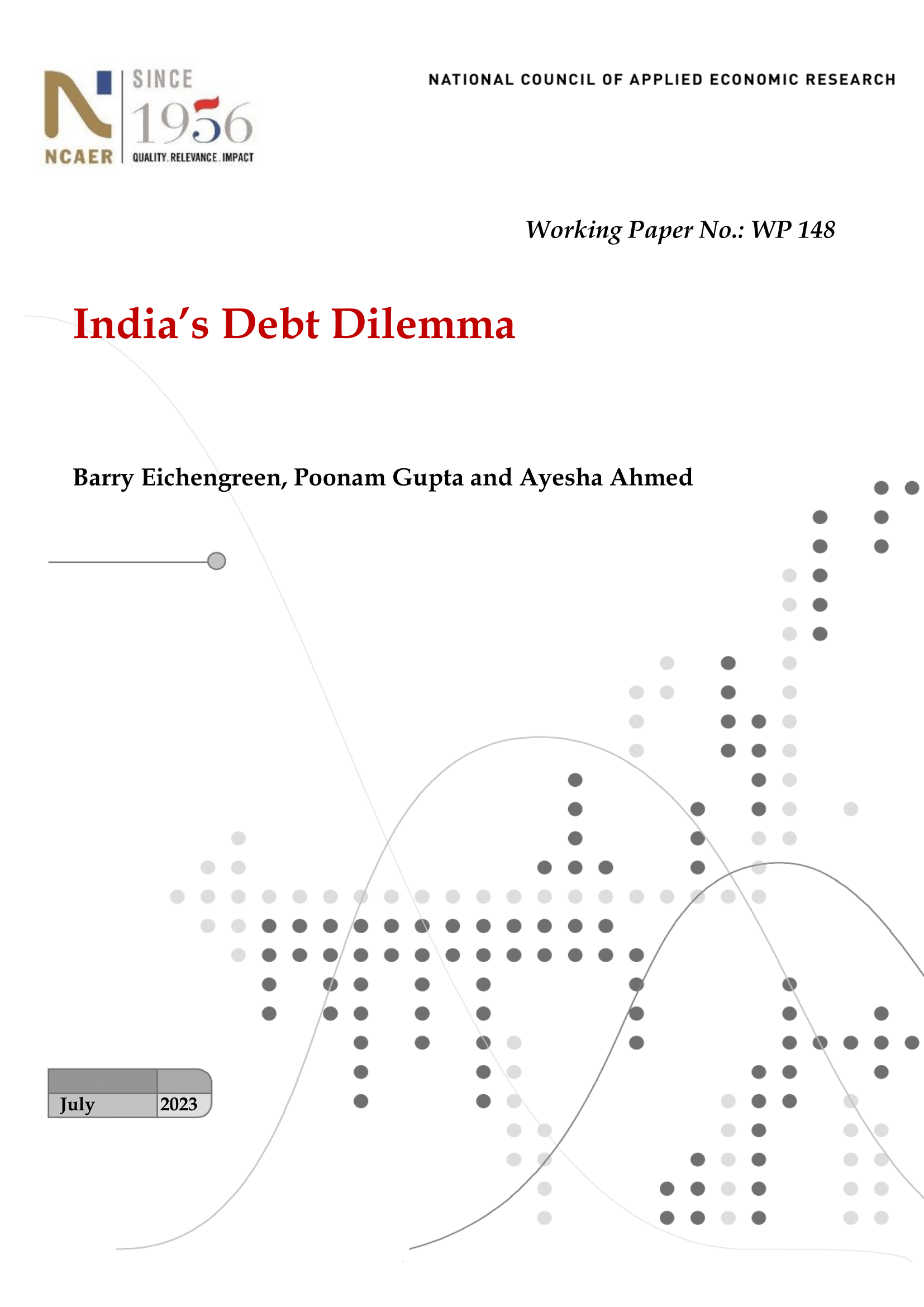India’s Debt Dilemma
Barry Eichengreen
Poonam Gupta
Ayesha Ahmed
July 2023
India was an outlier on fiscal outcomes pre-pandemic, before drifting further in the high debt direction during COVID. High levels of debt limit the resources available for other priorities such as health, education and climate change abatement. At the same time, there is no immediate crisis of debt sustainability: institutional factors limit rollover risk, and interest rates have not risen with additional debt issuance. But financial stability and sustainability risks may arise in the future, and lack of resources to meet pressing needs is a drag on growth. Consolidation would require lower primary deficits achieved through tax revenue generation and privatization, all while protecting and prospectively increasing capital spending. Contingent liabilities pose risks to the public finances of the States and should be minimized by fiscal-management reforms. As their debt manager, the RBI should allow States to face the market interest rates warranted by current and projected debt levels. Financial Commissions should be strengthened so as to provide stronger incentives for prudence.
National Growth and Macroeconomic Centre







